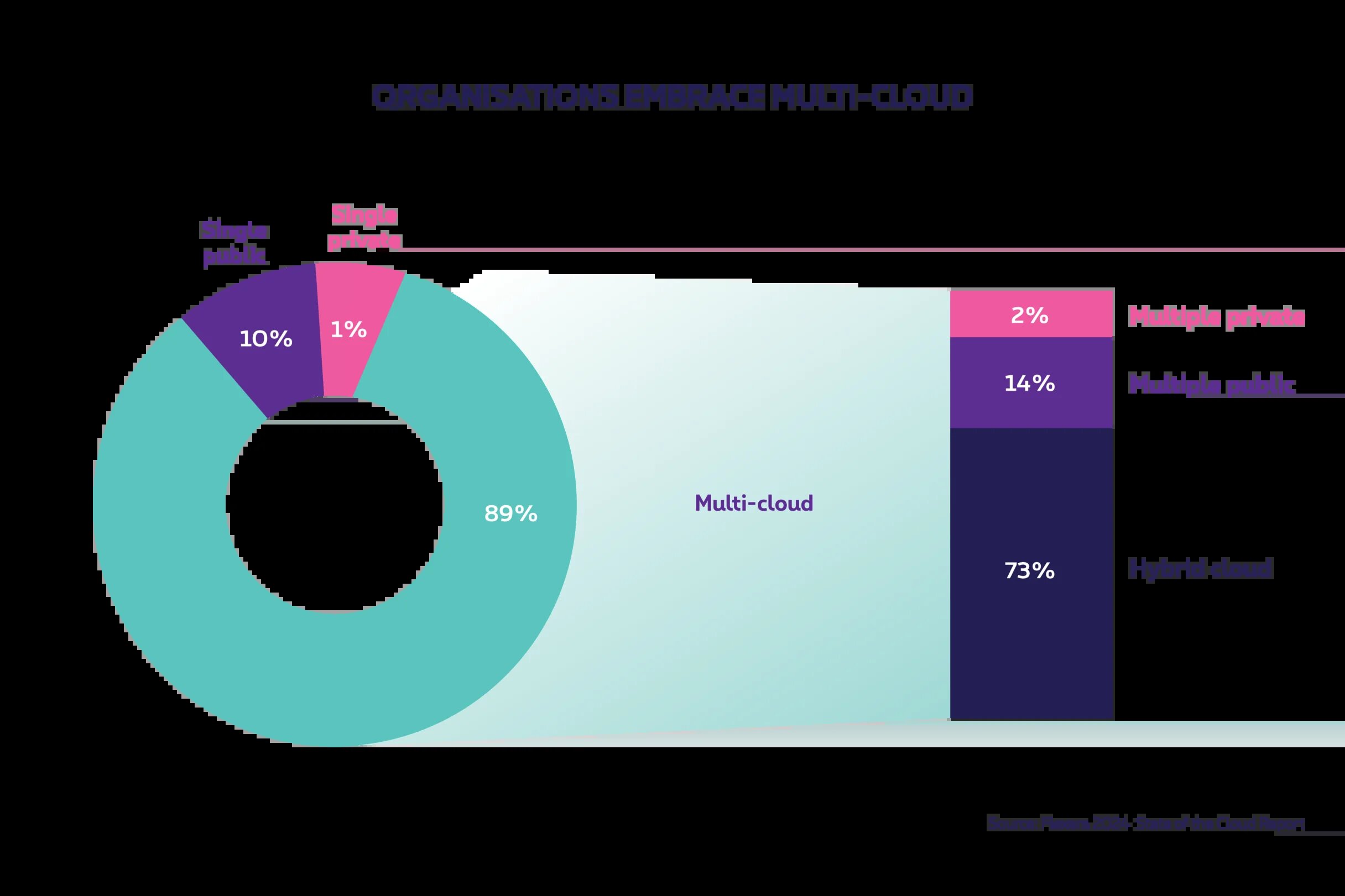
Evolving Cloud Landscapes: The Rise of Multi-Cloud
By harnessing the strengths of various cloud providers, businesses can achieve enhanced flexibility, scalability, security, and cost-effectiveness. The rise of the multi-cloud model marks a major evolution in the cloud computing landscape.
However, effectively managing these intricate environments demands thorough planning, a strong cloud strategy, and continued investment in skills and technology. With these caveats in mind, organizations can fully tap into the potential of multi-cloud architectures, possibly with the assistance of a trusted partner.
Multi-cloud solutions enable businesses to use two or more cloud services from several public cloud service vendors - like Microsoft Azure, AWS, and Google Cloud Platform - which allows them to take advantage of the best cloud offerings each vendor provides. One possible multi-cloud scenario could be to combine Microsoft Azure for robust data analysis, AWS for secure data storage, and Google Cloud Platform for versatile app support, for instance.
Multi-clouds differ from their hybrid counterparts in that hybrid cloud environments comprise a mixture of private and public cloud services, while multi-cloud models rely solely on multiple public cloud services. According to Flexera's 2024 State of the Cloud Report , 89 percent of surveyed organizations have already adopted a multi-cloud strategy.

When to Adopt a Multi-Cloud Approach?
By leveraging the unique strengths of each provider for distinct workloads, multi-cloud helps improve resource utilization, tailor solutions to specific needs, and reduce costs. Using multiple cloud providers enables organizations to avoid service limitations and mitigate risks associated with vendor-specific changes. This flexibility also allows them to escape vendor lock-in while ensuring high availability and resilience through diversified infrastructure. Financially, multi-cloud demonstrates wise decision-making by tapping into the cost-effectiveness of public cloud services.
Ultimately, multi-cloud provides a strategic framework that supports operational efficiency, enhances performance, and bolsters reliability, positioning organizations to meet their evolving needs in a dynamic cloud landscape.
Navigating the Challenges of Multi-Cloud
While multi-cloud strategies offer significant advantages, they also come with some drawbacks that organizations must carefully manage. One of the primary challenges is integration. Although multi-cloud promises simplicity and flexibility, ensuring seamless cooperation among various public cloud providers can be complex. Achieving smooth integration across different cloud environments requires careful planning, coordination, and ongoing effort to ensure all systems work harmoniously together.
Multi-cloud security also presents challenges, as managing data across multiple public cloud providers necessitates vigilant oversight. Organizations must implement consistent and robust security measures across every cloud platform they utilize to protect sensitive data, prevent breaches, and comply with regulatory requirements. Maintaining a uniform security posture across different environments can be resource-intensive and requires dedicated focus on monitoring, updating, and enforcing security protocols.
Maximizing Flexibility and Performance
Multi-cloud is often a smart choice when organizations seek to expand virtualization without being constrained by their internal infrastructure. By leveraging multiple cloud environments, organizations can also explore new opportunities and scale operations more efficiently without being tied to a single provider.
Furthermore, multi-cloud strategies allow for customized cloud implementations that align with specific business objectives. This flexibility enables organizations to tailor their cloud usage to various departmental or project-based requirements, optimizing both performance and costs.
Performance and latency issues can also prompt the shift to a multi-cloud approach. By incorporating additional providers into the cloud architecture, organizations can identify and implement more efficient alternatives that enhance performance and reduce latency.
Additionally, multi-cloud computing is well-suited for managing decentralized services. In scenarios where a distributed service architecture is necessary, multi-cloud offers a strategic approach to managing multiple services across different environments, ensuring continuity and improved management across the board.
A Time for Alliances
As organizations increasingly adopt multi-cloud strategies, cloud providers will look to form partnerships that leverage their combined strengths to accelerate the launch and delivery of multi-cloud products and services. A prime example of this is the collaboration between Microsoft and Oracle. Despite being competitors in the cloud space, they have strategically connected their cloud services, enabling customers to run enterprise applications across both Microsoft Azure and Oracle Cloud .
***
Sources : Flexera, Cogent Infotech, NEXTDC + miscellaneous